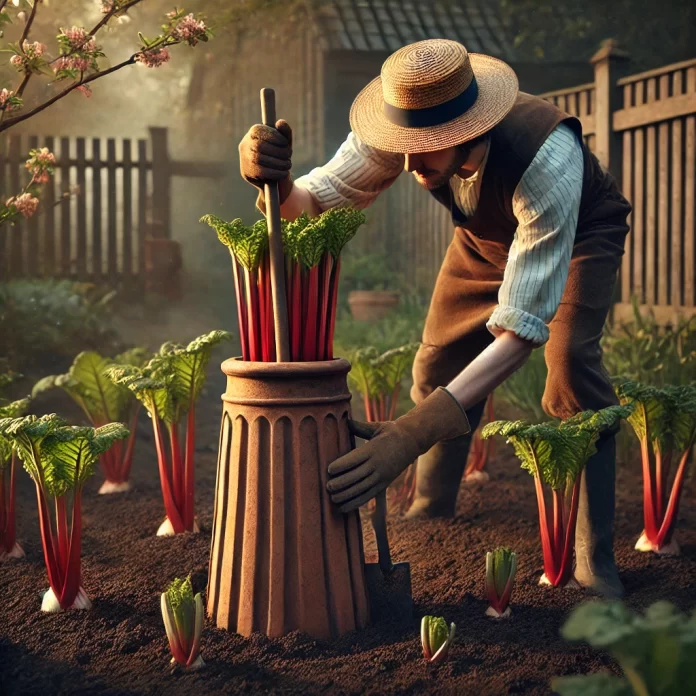Forcing rhubarb is a traditional gardening technique that produces tender, sweet stalks, perfect for early-season pies, crumbles, and jams. This method involves excluding light from the plant to encourage faster, etiolated growth. Here’s how to do it and when to get started.
Why Force Rhubarb?
Rhubarb forced in the dark grows quickly, producing stalks that are thinner, less fibrous, and brightly colored, often pink or red. The process also mellows the tangy flavor, making the stalks ideal for cooking.
When to Force Rhubarb
The ideal time to start forcing rhubarb is in mid-to-late winter, typically January to February in the UK, once the plant has undergone its natural dormancy period. This ensures the crown has stored enough energy to support new growth. Forcing too early can weaken the plant.
What You’ll Need
- A healthy, established rhubarb crown (at least three years old).
- A forcing pot or a large upturned container, such as a dustbin or bucket.
- Insulation materials like straw or hessian (optional for extra warmth).
How to Force Rhubarb
- Choose the Right Plant: Select a robust, mature rhubarb crown. Forcing takes a lot of energy, so younger or less-established plants may struggle to recover.
- Prepare the Crown: Clear away dead leaves and debris from around the crown to reduce the risk of pests and diseases.
- Exclude Light: Place your forcing pot or container over the crown. Ensure it’s tall enough to accommodate the stalks as they grow. If your container has holes or gaps, cover them to block out light completely.
- Add Warmth (Optional): In colder regions, you can insulate the container by wrapping it with straw, fleece, or hessian to encourage faster growth.
- Wait for Growth: Check periodically, but avoid lifting the container too often. After about 6 to 8 weeks, you should see tender, elongated stalks ready for harvest.
Harvesting Forced Rhubarb
- Once the stalks reach about 20-30 cm (8-12 inches), they are ready to harvest. Pull stalks gently from the base rather than cutting them to avoid damaging the crown.
- Only harvest for a short period (up to 6 weeks) to ensure the plant can recover for the next growing season.
Aftercare for the Crown
Forcing depletes the rhubarb crown’s energy reserves, so it’s essential to let the plant recover. Once you’ve finished harvesting, remove the container and allow the plant to photosynthesize freely. Avoid forcing the same crown two years in a row.
Varieties Suited to Forcing
While most rhubarb varieties can be forced, some are particularly well-suited:
- ‘Timperley Early’: A popular choice for early forcing.
- ‘Victoria’: Produces large, flavorful stalks.
- ‘Champagne’: Known for its slender, bright pink stalks.
Tips for Success
- Use well-fed crowns. Apply a layer of compost or well-rotted manure around the plant in autumn to boost nutrient levels.
- Protect crowns from extreme frost by covering them with straw or mulch before forcing.
- Rotate forcing between different crowns each year to maintain healthy plants.
Forcing rhubarb is a simple, rewarding process that brings a taste of spring to your table weeks ahead of the natural season. With the right care, your rhubarb patch will remain productive for years to come.




